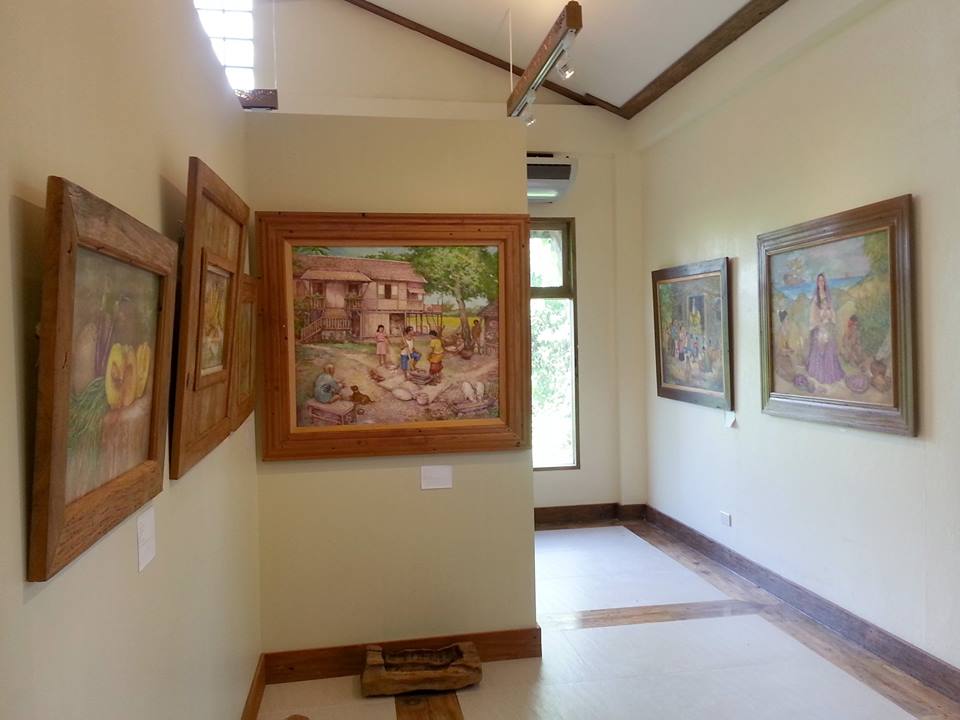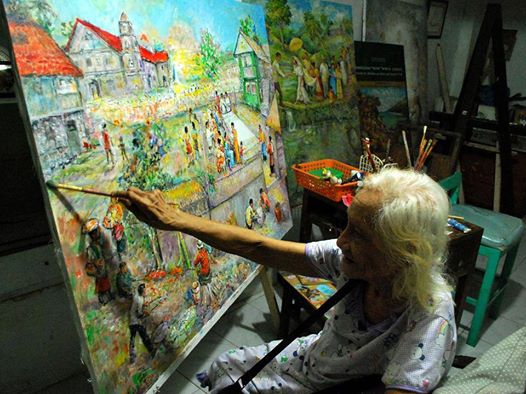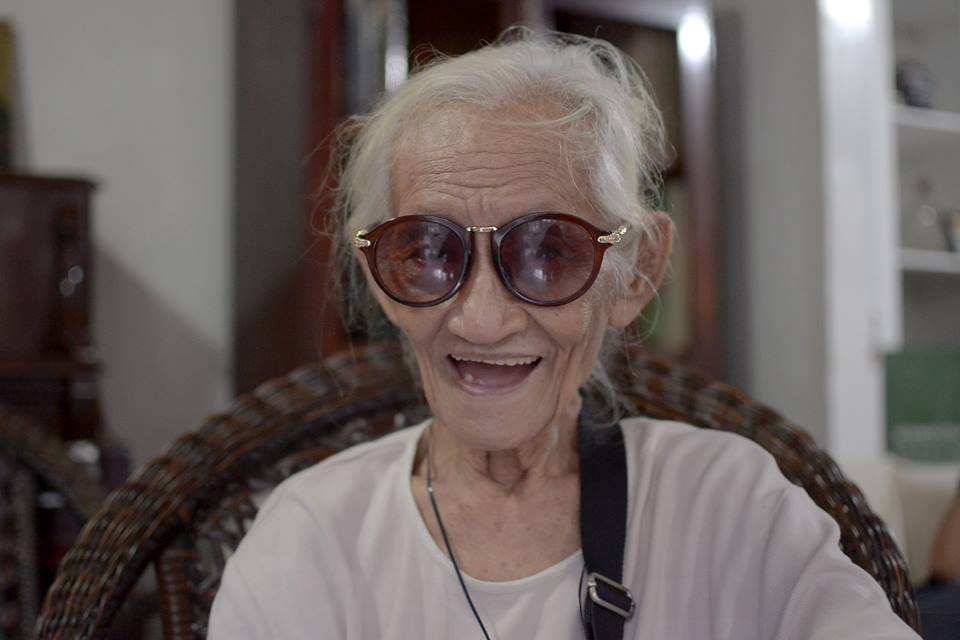
TAGBILARAN City – Nene Lungay is in the hearts of the grieving art and culture community of Bohol.
Artist Hermogena “Nene” Borja Lungay, a cultural icon in the visual arts in the Central Visayas region, if not in the country passed away a few weeks before her 87th birth anniversary on Sept. 2.
A series of tributes had been given in honor of the artist, fondly called Ma’am Nene Lungay in this scenic tourist island in central Philippines—first by her students under “Udlot” (New Leaf), the longest running art clinic for children here; and then by “ Baji” (Woman), an organization of women artists here.
Both groups have felt like being orphaned by their “mother mentor” Lungay—an artist who was formally trained at the University of the Philippines’ School of fine Arts where she graduated Cum Laude.
National artist and abstract painter Jose Joya and Napoleon Abueva, national artist and father of modern Philippine sculpture, were among her distinguished classmates.
“We were students of the legendary Fernando Amorsolo and Guillermo Tolentino. Hermogena Borja was the only woman in a class of 16 in the UP School of Fine Arts batch 1949,“ Abueva told Marjorie Evasco in her award-winning book on Lungay, titled “Life and Art of the Boholano Artist (2006).”
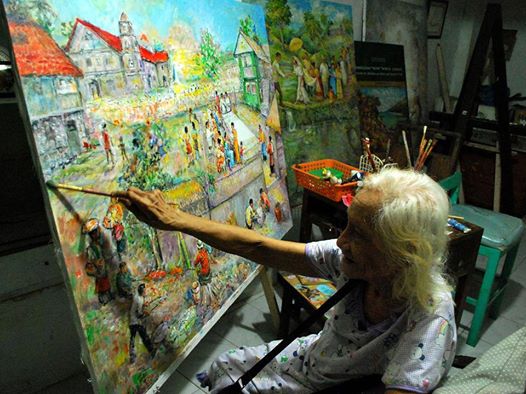
“Her delicate and precise drawings were admired by all her classmates,” Abueva recalled, adding that she painted landscapes and historic buildings of the province, and “made them treasures of our Philippine patrimony”
Her daughter , Nelia Lungay Recemilla , also an artist noted a “special kind of light exuded in her (Lungay’s) paintings,” adding her mother “refused to paint dark, gloomy subjects, believing that art is there to uplift, rather than to depress” people.
Commenting on a garden scene with crawling vines on a fence she posted in mid-August, Recemilla said, “It’s a tiny portion of my mother’s garden, closest to the street. It has been a source of so much joy to her. She used to spend endless moments here. It’s very precious to her.”
Remecillas described her mother as “a bundle of passion” who welcomed everybody, literally, including stray cats and dogs.
After marrying Nicholas Lungay, a banker, she lived in various parts of the country, and finally returned to Bohol where “her art always was,” Abueva said. But having nine children, she preoccupied herself with domestic life and occupational concerns, while her passion in the arts was, at one time relegated to painting backdrops for fiesta operettas.
Aside from being a painter, “Ma’am Nene loved to play the piano and loved poetry,” noted Vida Tirol-de Juan, artist and current head of the Bohol Arts and Cultural Heritage Council. “For most of us, Baji artists, she was our life coach. She encouraged us to be women of strength, to stand firm for what we believed in.”
The Tagbilaran and Bohol province’s Center for Culture and Art Development honored Lungay last Aug. 17 with a multi-media program, composed of poetry, music, dance, songs and testimonials from fellow artists and friends, with some of her paintings as backdrop at the Bohol Cultural Center.
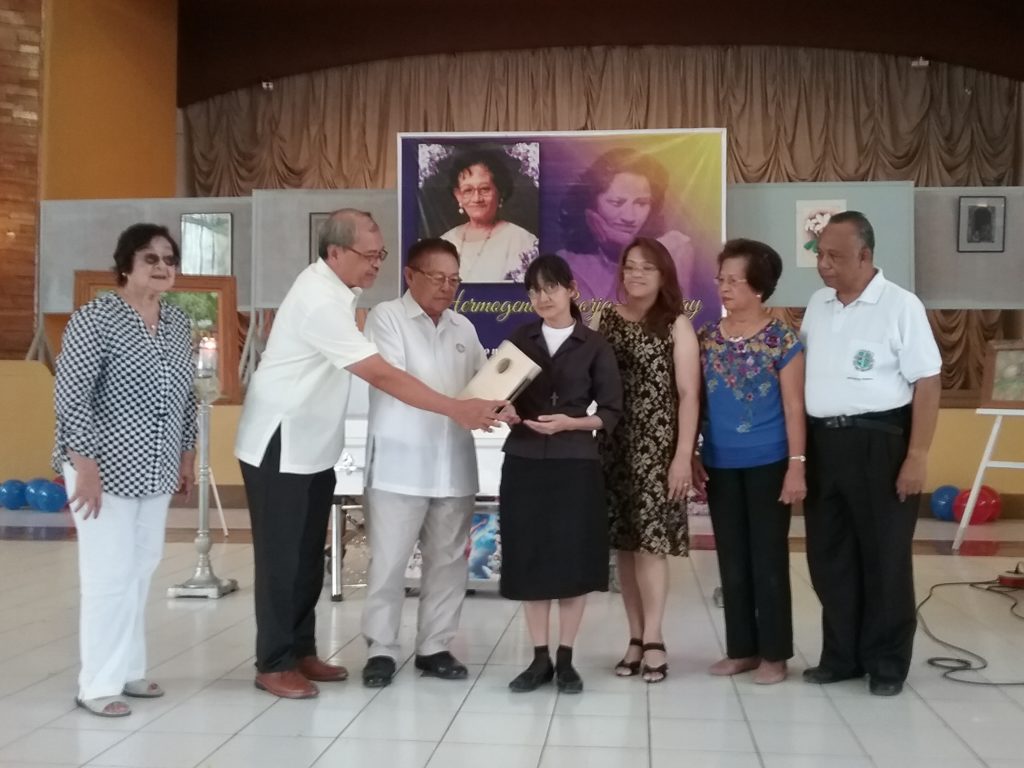
Italian violinist Tulio Vidmar opened the tribute with a stirring rendition of “Buhi sa Kanunay” (Eternally Alive), accompanied at the piano by pianist Enriqueta Butalid.
Paul Vistal, a product of Lungay’s Udlot, delivered his poem “Panamilit sa Udlot” (Farewell from Udlot) to the departed art teacher. “Ma’am Nene taught me how beautiful Bohol is, with my heart and imagination,” he said.
Fellow artist Ric Ramasola observed that aside from being a good painter, Lungay was also a good teacher, so much so that he sent his son to study painting under her. He also cited her for being a “good mother and advocate of the arts” that made her one of “the Most Outstanding Boholanos.”
Rosario Borja Corales recalled that her sister Nene Lungay was so shy that she scheduled her own wedding at 4:30 a.m. “because there would be few people attending (Mass) then,… [and that] she passed up an opportunity to go to Spain on an art scholarship.”
Maria Corazon Logarta, a bosom friend of the artist, recalled that they both “infiltrated” what used to be exclusive enclaves of men in the Philippines—the world of visual arts and philosophy.
A resolution presented by the Sangguniang Panlalawigan of Bohol to the family for the late artist’s contribution to the cultural life of the province recalls that for Nene (Lungay), “Art is life; life is art. Art is the beauty of life. It is God’s gift for the mind, heart and hands.”
